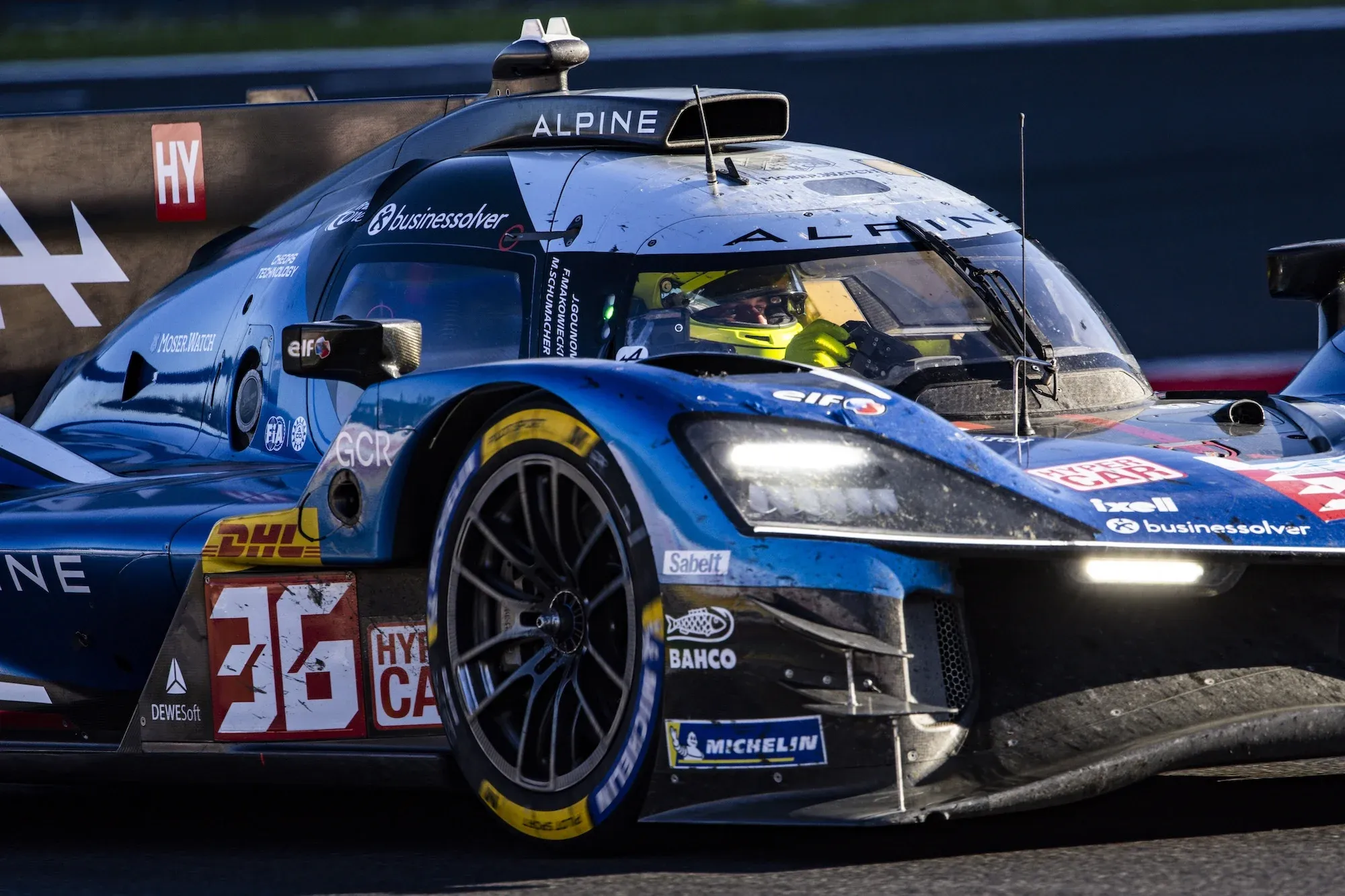Download The Racing Line on iOS today and get 70% off a year's subscription!
Alpine were so, so close to winning at Spa. 4.2 seconds, in fact, and just 0.919 off second. That's by far the closest they've been to a win since they debuted the A424 last year, and it affirms their pace in the FIA World Endurance Championship.
Yes they've had podiums before — last time out, before Spa, at Imola for example. But while that was at least partially down to strategy, the podium at Spa was on genuine pace. A first win for the A424 can't be too far off.
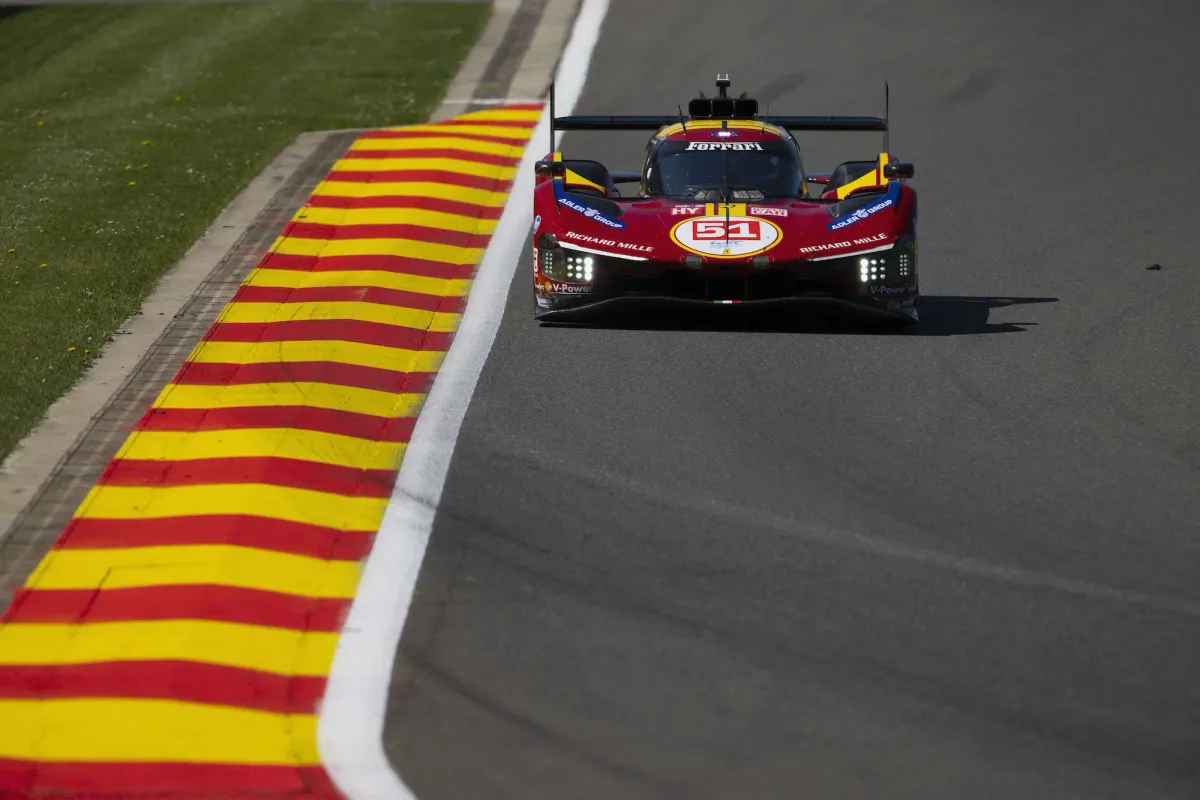
Makowiecki's charge at the start
Fred Makowiecki was scintillating in the first hour of the race, going from sixth to second, chasing down Nicklas Nielsen in the #50 Ferrari by 3pm local time.
If you look at the top 20% laps recorded by each car in that first hour, it does show that he was marginally slower than all three Ferraris in the first hour. Top 20% is enough to remove laps affected heavily by traffic.
Reverse that to find the top 80% laps — excluding the slowest 20% — and the picture changes considerably.
Looking at it from this metric, Makowiecki was now (marginally) faster than Hanson, Calado, and Nielsen. After the race, Calado spoke about this first stint and his battle with the Frenchman.
'I made a good start, got into P2, overtaking the #83,' said the Briton.
'And then from there onwards, I was just trying to make sure that we can double [stint] these tyres.
'That was the plan in the strategy, to double. I probably managed a little bit too much, realistically speaking, because in the second stint I was much quicker and the grip was a lot better. So yeah, something to learn from,' he concluded.
Meanwhile, Makowiecki was pushing hard, whether in traffic or not, as he later related.
'I tried to stay close, I did not lift [at Eau Rouge] for the two laps before, to try and get close to him,' Makowiecki told reporters, including Only Endurance, after the race.
'We got contact, I didn't expect he wanted it so strong to not let me pass. At one point it was him or me. And if he'd continued, he'd have finished in the wall,' he added.
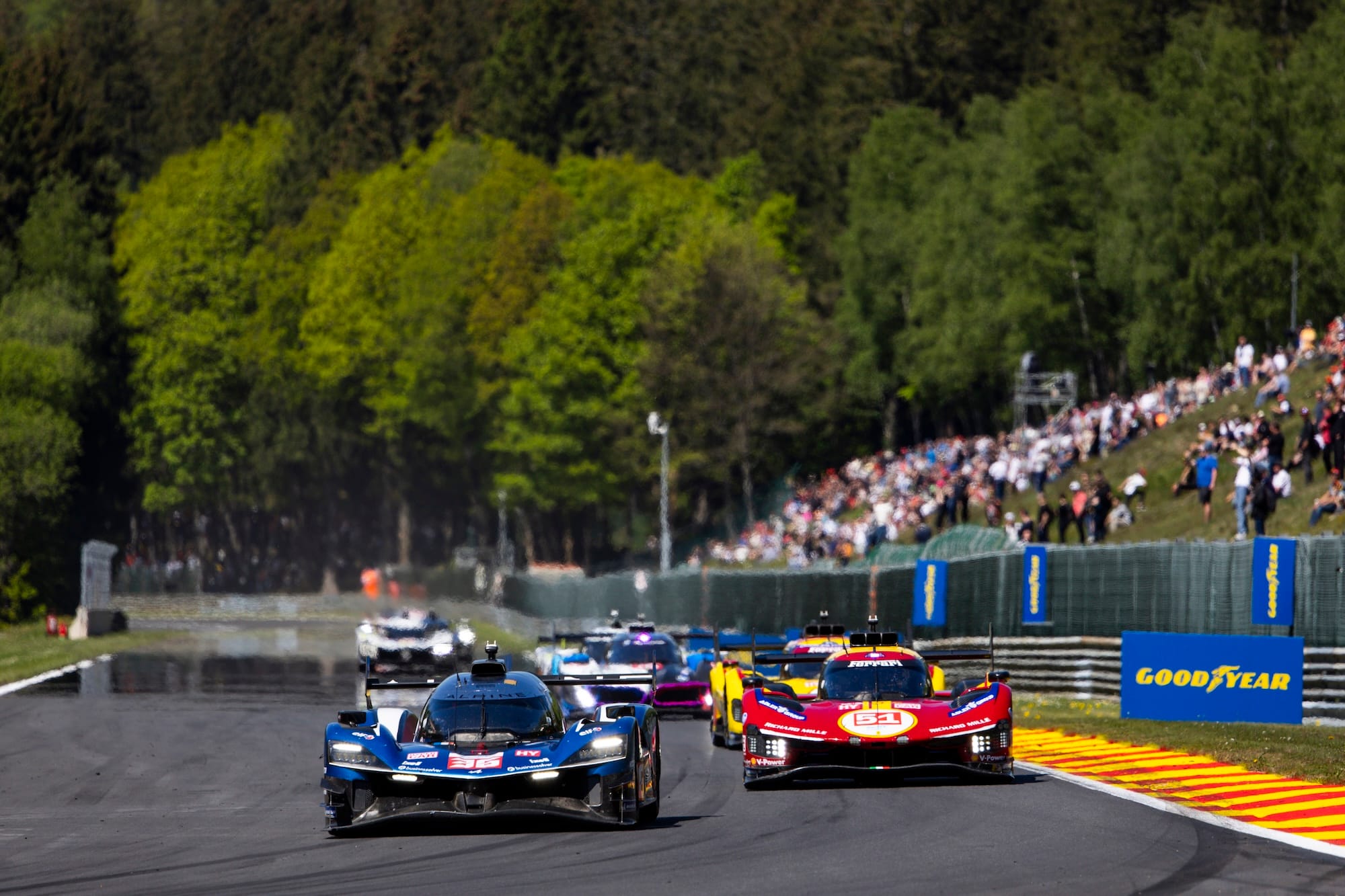
Gounon leads and Schumacher fights
Jules Gounon replaced Makowiecki in the car and, almost immediately, took the lead of Molina, now in the #50 Ferrari.
Alpine undercut Ferrari and Gounon pounced on the Spaniard to take the lead.
Gounon, however, was only in the car for two stints, 32 laps in total. During his stint, laps 65 to 96, he was two tenths on average slower than the #50 Ferrari when he wasn't slowed by traffic.
Almost a third of the stint was taken up by laps under either safety car or virtual safety car, so 80% averages become a little useless. But when looking at 60% averages, the two become closer, with less than a tenth in it.
The gap between the two — with Molina initially in the #50, then Fuoco — was small for the entire stint. Gounon lost the lead to the #93 Peugeot of Jean-Eric Vergne, although he would later slip down the field as Peugeot made a strategy error, not pitting under VSC like everyone else.
Schumacher's epic battle
Mick Schumacher replaced Gounon for the final two hours of the race. The German has generally been amongst the quickest Alpine drivers and certainly the quickest in the #36 car this year, so putting in him at the end when it really matters makes sense.
His epic battle with Alessandro Pier Guidi, in the #51 Ferrari, and #20 BMW's Robin Frijns, will go down in history as one of WEC's great fights for position.
While Frijns eventually prevailed, with Pier Guidi settling into third and Schumacher fourth, Frijns' car would later be retired with an increasingly long brake pedal.
Looking at the pace in the fifth hour of the race, when this three-way battle took place, all three were within half a tenth of each on average.
Clearly neither of the three were saving fuel, and were pushing each other hard — sometimes over the limit.
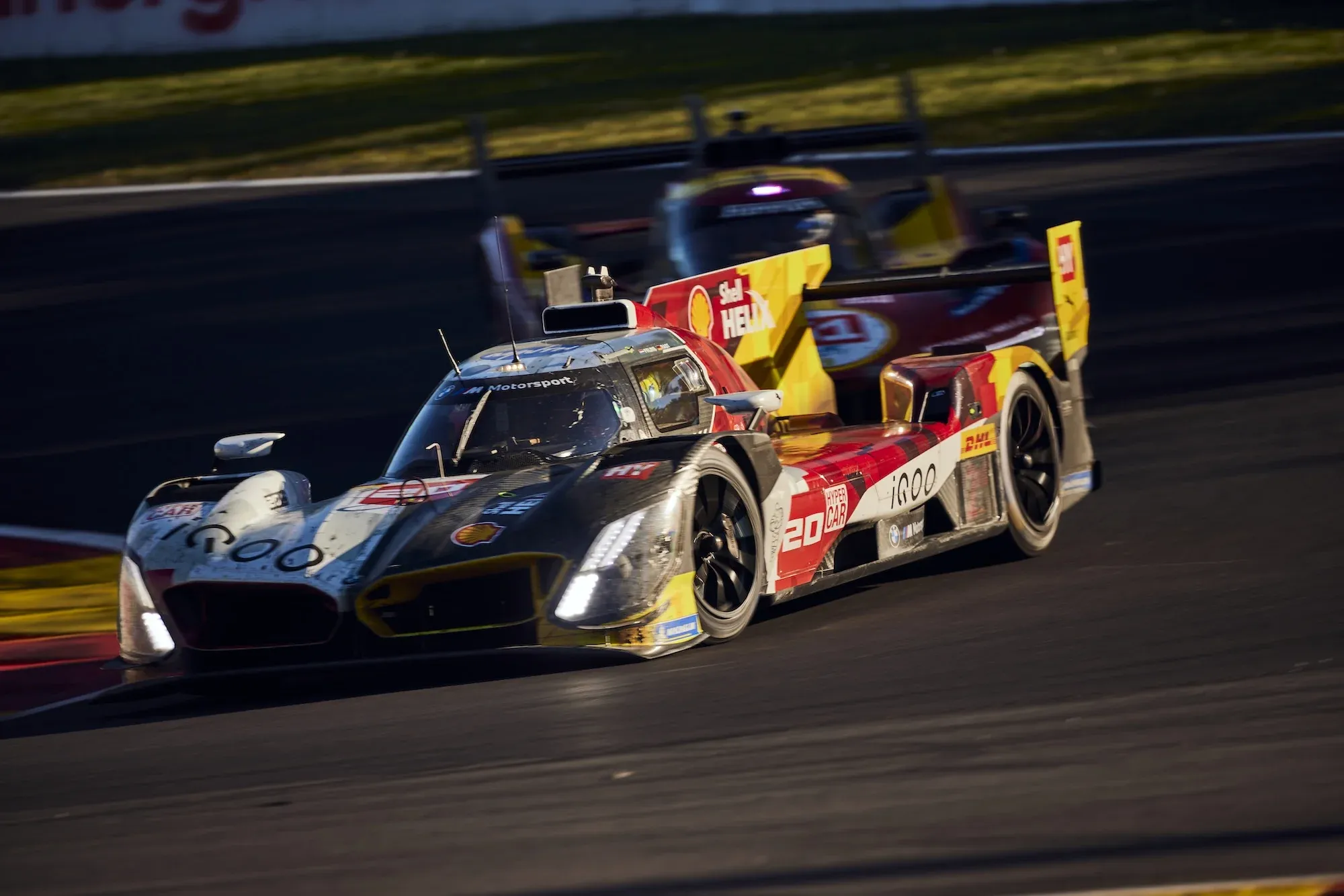
'It was a nice fight to be honest,' said Pier Guidi after the race.
'Sometimes you are on one side. Sometimes on the other side. To be honest, I never complain about anything. I think it was quite okay, at least.
'I overtook at Eau Rouge, and they asked me to give the position back. And I gave the position back and did what they asked me and I had nothing as well to say.
'I think it was was quite nice to watch from outside,' the Italian finished, with a chuckle.
Alpine takes alternative strategy
With Frijns now out of the picture due to his long brake pedal issue, the fight for the win came down to a battle between Schumacher, Pier Guidi, and Nielsen, back in the #50 Ferrari for the final stint of the race.
Alpine pitted Schumacher for his penultimate stop early, on lap 111 fter a 16 lap stint. This is similar to the strategy the team at Imola to great success, taking a largely unfancied third in Italy.
This essentially boils down to splitting the tank of fuel they'd need to finish the race, taking part earlier than needed, and they other half late on, rather than the conventional strategy and taking as much fuel as you can and fuel saving to the finish.
This dropped the German out of the top 10 and into 14th. Crucially, though, he was in clear air and able to set fast lap times.
And fast they were — but not faster than Pier Guidi. Looking at the 20% average, the 60% average, and 80% average for Schumacher's penultimate stint, he was the second fastest car on track — but not quicker than Pier Guidi in the #51 Ferrari.
The Italian was running second until he stopped, which promoted Schumacher up the field and back into the podium positions.
Sebastien Buemi, in the #8 Toyota and on a similar alternative strategy to Schumacher, was leading but soon pitted. This put Schumacher into the lead. Things were looking good for Alpine.
However, with 40 minutes remaining, there were only 20 seconds between Pier Guidi and Schumacher. This gap decreased too, to 15 seconds by the half hour to go mark.
Support Only Endurance's independent sportscar journalism today from £1/$1/€1 a month
Slow puncture compromises Alpine
Schumacher was on old tyres, and needed more fuel to get to the end. He pitted on lap 136, earlier than needed as his rear right tyre had a slow puncture.
He rejoined fifth, crucially behind Nyck de Vries in the #7 Toyota. Despite the fact de Vries would need to pit again for the final splash of fuel, he battled Schumacher, at one point pushing the German off track.
At this point, the #36 Alpine was 40 seconds off Pier Guidi in the lead.
However, on his old tyres — well, 3 of 4 old tyres — he wasn't able to close the gap, and with Pier Guidi pushing to create a big enough gap to pit into and retain the lead, it opened up to 48 seconds by the time the Italian pitted.
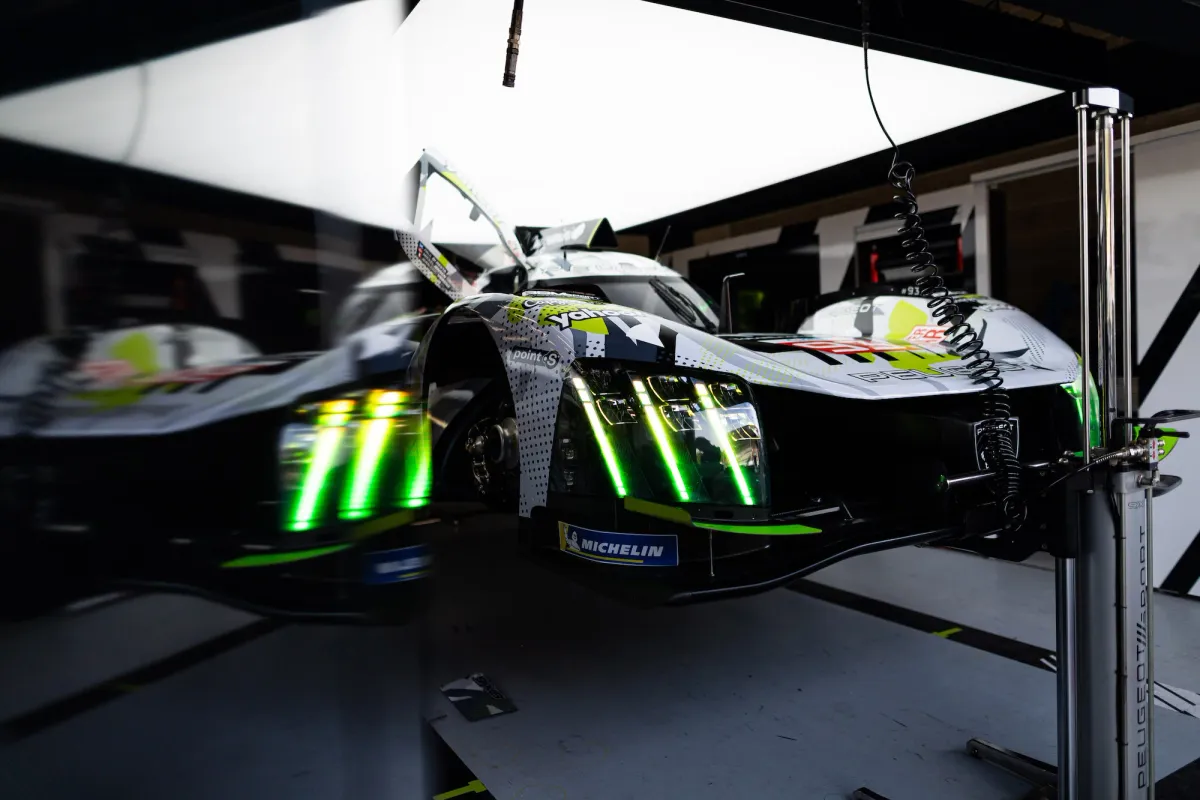
This was with 11 minutes remaining, seven laps later than Schumacher. Including traveling down the pit lane the stop totaled 35 seconds — 16 seconds longer than Schumacher's seven laps earlier.
And that was the gap when Pier Guidi rejoined, still in the lead. However, Schumacher had another problem — Nielsen was now second, and had in theory enough energy to majke it to the end without stopping.
Schumacher would eventually finish 0.919 behind Nielsen. However, with two full course yellows in the final hour, plus Schumacher having 9% extra energy as he crossed the line... could he have taken second?
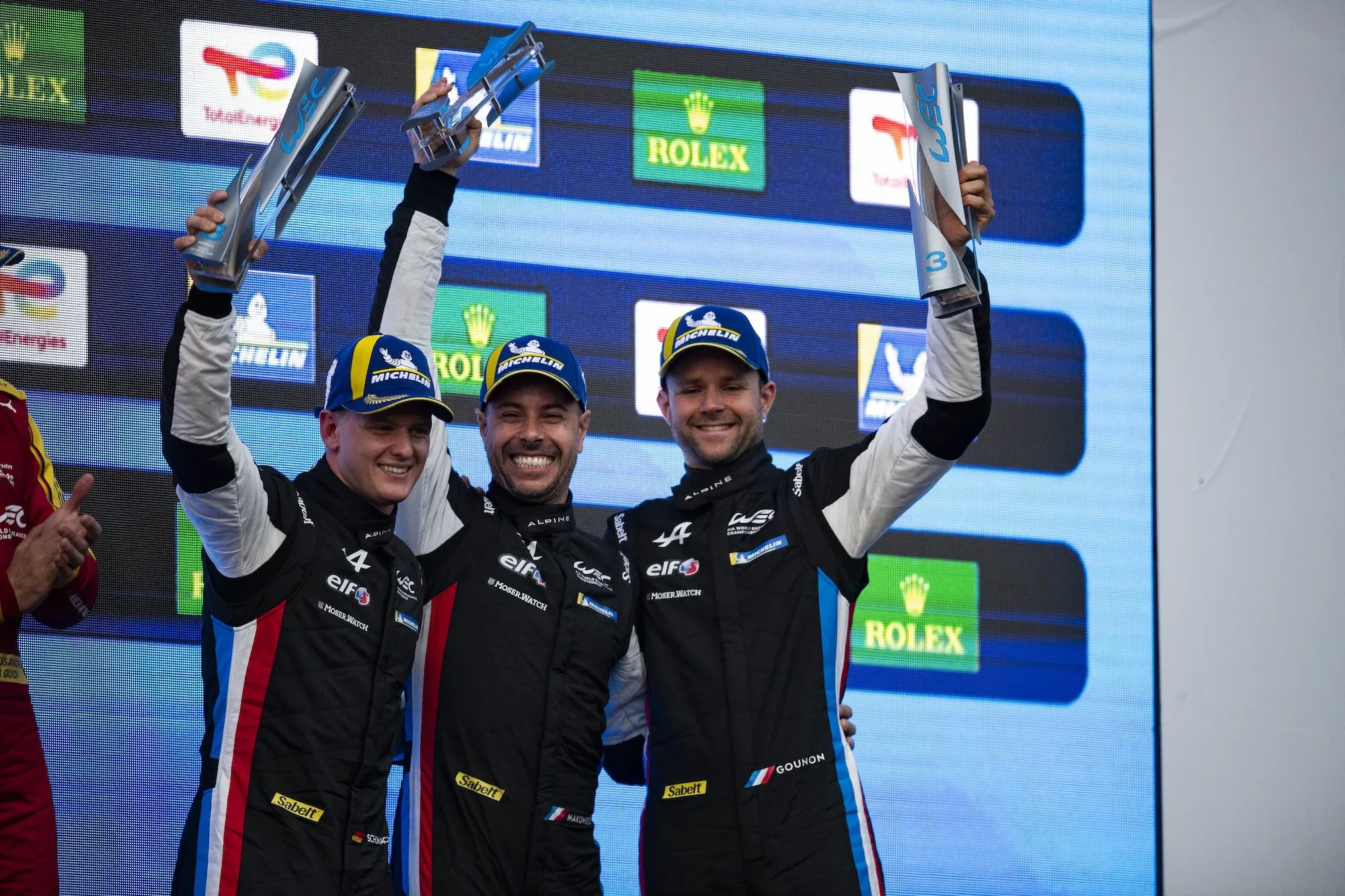
'It was a good race overall,' the German said after the race.
'We were fighting for the win until a slow puncture compromised our chances. We had to settle for the podium, but we can be happy with that. The trend is really moving forwards and upwards, and the team is getting better and better every weekend.
'Fred did an amazing stint to start the race, Jules took over and got into the lead, and it was a proper battle just until the finish. We're on the right track and there is a lot to take away from this weekend. Now we're excited to see what the next race will bring, and it’s obviously the big one. As a team, we are very much looking forward to it.'
So, a second podium in a row for Alpine after the success at Imola. However, despite their on-track pace, they only sit fourth in the constructors standings.
But, with Le Mans next, the championship is likely not at the forefront of anyone's minds. As Alpine team principal Philippe Sinault said:
'The goal is to build on what we've learnt and consolidate our foundations to be better prepared for Le Mans than we were a year ago.'
Onwards to the big one!
Feature image: DPPI / Alpine


